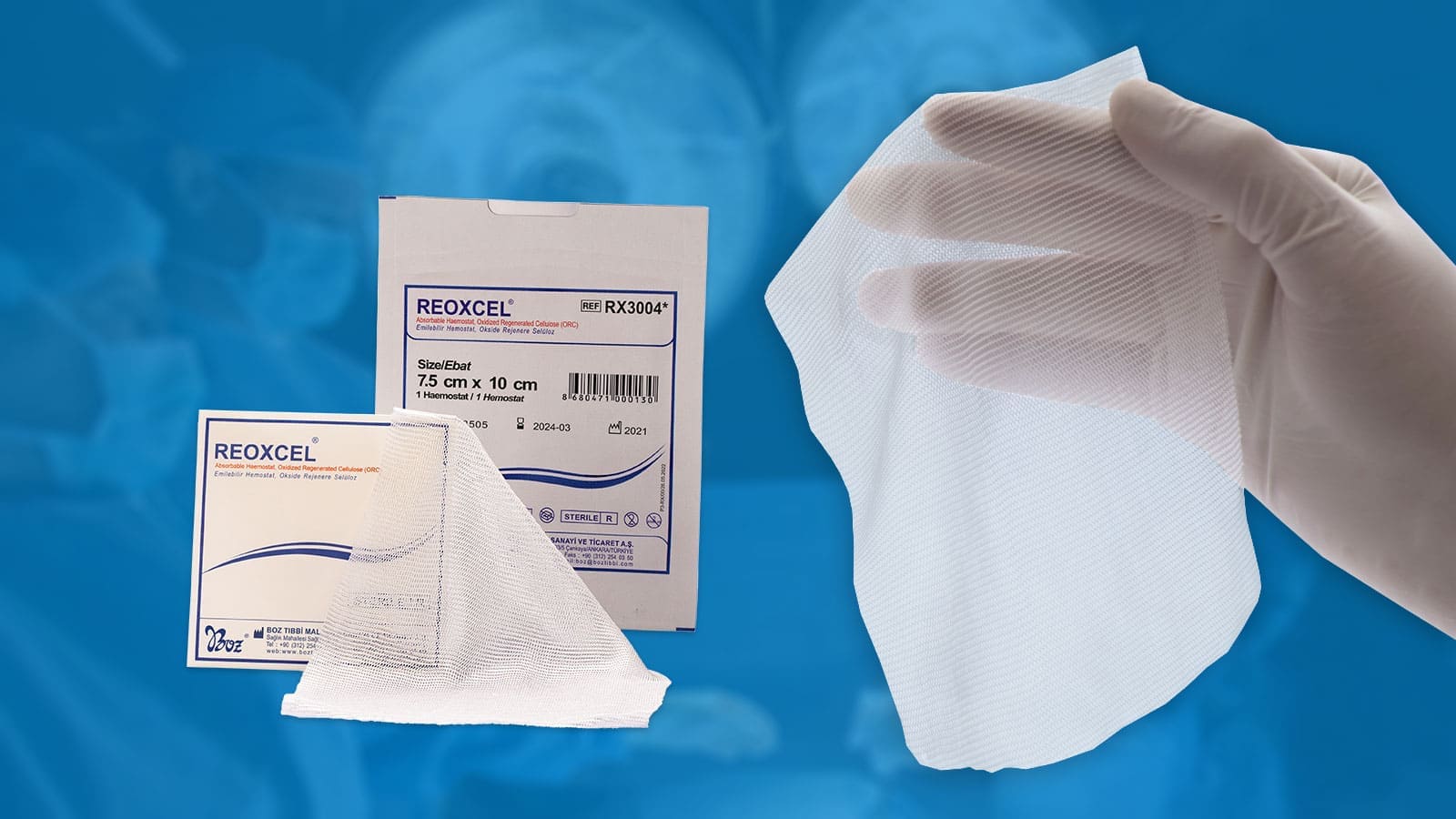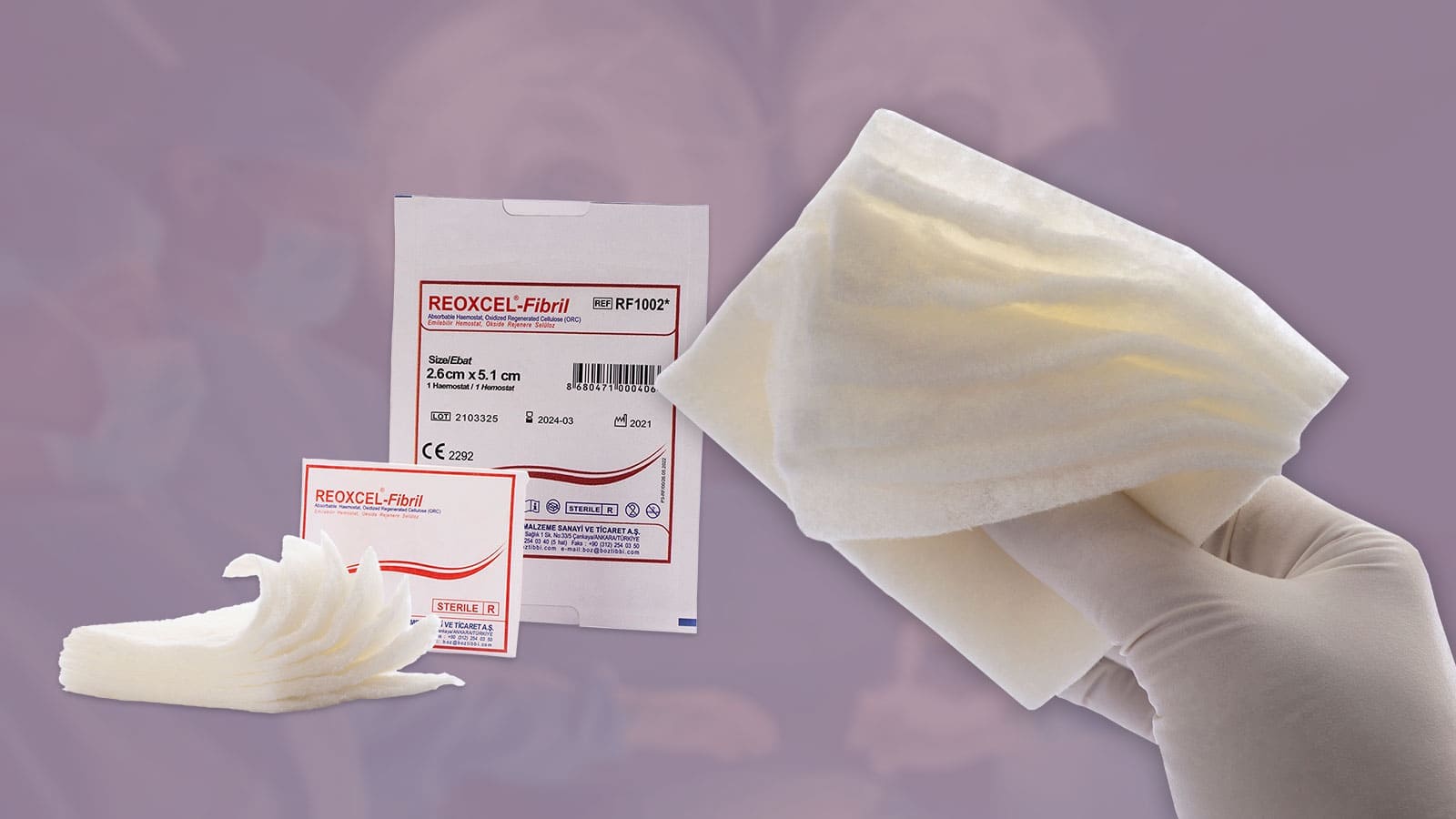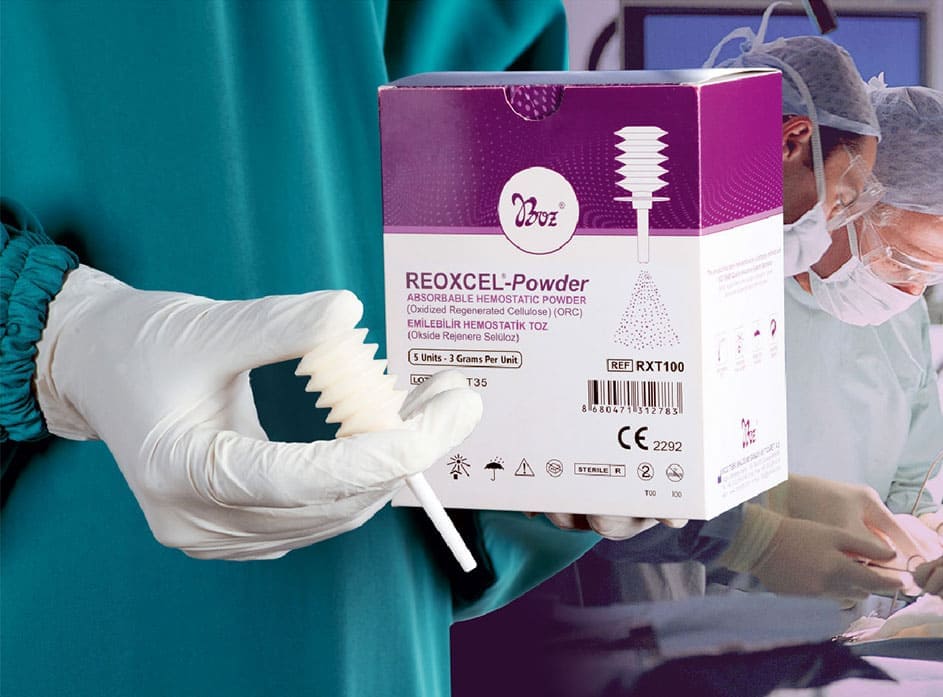Oxidized Regenerated Cellulose (ORC) based hemostat developed for purity and compatibility are a variation of pure cellulose with a different procedure.
Cellulose which is the fundamental component of the plant cell walls is the most common biopolymer. Cellulose has been used by humans since ancient ages and ancient Egyptians used papyrus plant to make everyday objects such as paper, rope, sandals and baskets. The paper production in the current form was developed in ancient China and the chemical structure of cellulose was defined by French chemist Payen in 1838.
100% organic cellulose is used as raw material for cellulose-based hemostatic production in surgical field. Cellulose is the raw material of plant-based hemostats and it is a carbohydrate obtained by repetitive chain molecule formation of anhydro-glycose units with hydroxyl group. Cellulose, a natural and environmentally friendly polymer that is vegetable, can be effectively degraded by many micro-organisms, is self-renewing, non-toxic, inexpensive, has high strength and thermal resistance, is abundant in nature as biomass. Cellulose does not dissolve in organic dissolvers such as alcohol, acetone, chloroform and water.
About Oxidized Regenerated Cellulose (ORC) Based Hemostats
Hemostats are medical devices that stop the bleeding to prevent blood loss in a short time after the application to the bleeding region. When the usage areas are considered, these products are used in serious injuries such as traffic accidents and surgical operations. Hemostats used in surgical operations are mainly produced as oxidized regenerated cellulose (ORC) which is a different variation of the cellulose mentioned above.
Hemostatic agents developed for different areas are manufactured in different sizes and types. Reoxcel hemostats can be investigated in three different types. These are plain fabric, fibrous and powder. Each of them offer effective results and ease-of-use in different fields.
About Plain Texture Cellulose-Based Hemostats
The hemostats produced from Oxidized Regenerated Cellulose (ORC) (polyanhydride glucuronic acid) and plain texture offer significant advantages based on bleeding type and intensity. The light braided structure easily covers the rough tissue to ensure fast and effective hemostasis and prevent tissue irritation. Plain texture Reoxcel absorbable hemostatic agents with flexible and thin knitting called rayon can be laid, pressed, covered and sutured (Reoxcel Sigma Knit with thick structure) on the bleeding surface.

About Fibrous Cellulose-Based Hemostats
The large structure created by cellulose molecule bundles is called “fibril”. The smallest bundle with 3.5mm diameter created by gathering 40 cellulose molecules on the same direction is called the “elementary fibril”. Elementary fibrils form microfibrils and microfibrils form lamellae.
Reoxcel Fibril which is a fibril hemostat has fibrous structure. The fibrous structure offers significant advantages and ease-of-use compared to plain texture standard Reoxcel hemostats. Reoxcel Fibril absorbable hemostatic agent offers multi-dimensional use by rolling, using as thin layers, tampon or ped matched different tissues, offers access to hard-to-reach areas, ease-of-use as well as better bleeding control and cautery use across layers.

About Powder Cellulose-Based Haemostats
Reoxcel Powder absorbable powder antihemorrhagic agent has Oxidized Regenerated Cellulose (ORC) (polyanhydride glucuronic acid) as the raw material. Reoxcel Powder powder hemostat in powder and sterile form is produced from regenerated cellulose raw material and the product is turned into powder form after chemical modifications following standardized oxidization procedures. The agents that will act as the enzyme cofactor to take active role in coagulation process are chemically bonded to oxidized regenerated cellulose and brings the hemostatic property of the material to the top level. Reoxcel Powder absorbable hemostat which is more effective to control capillary veins, venous and small arteries offers bactericidal effect against 40 types of microorganisms.
